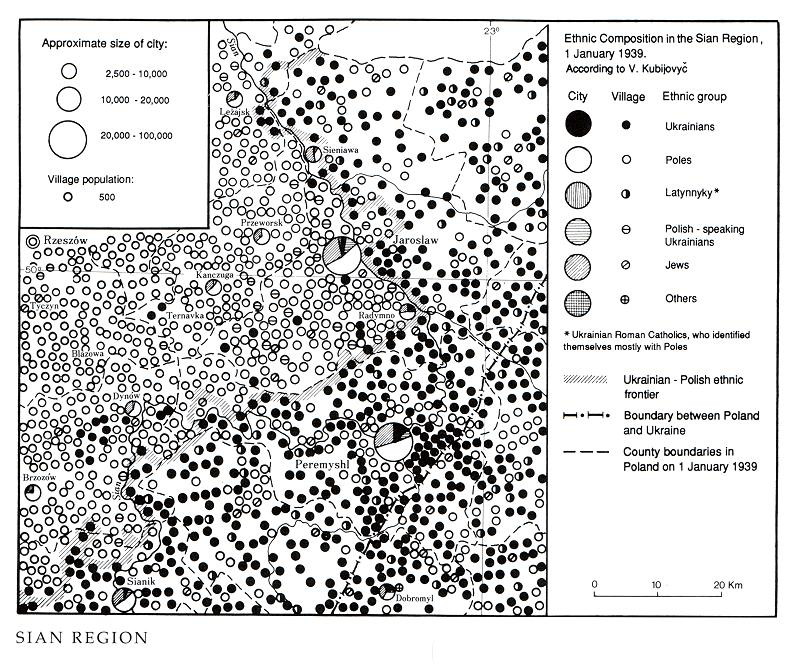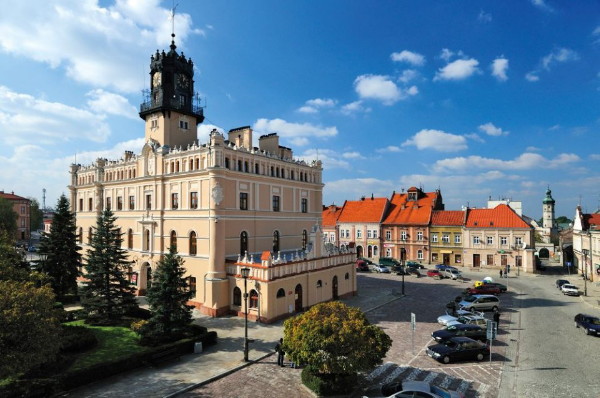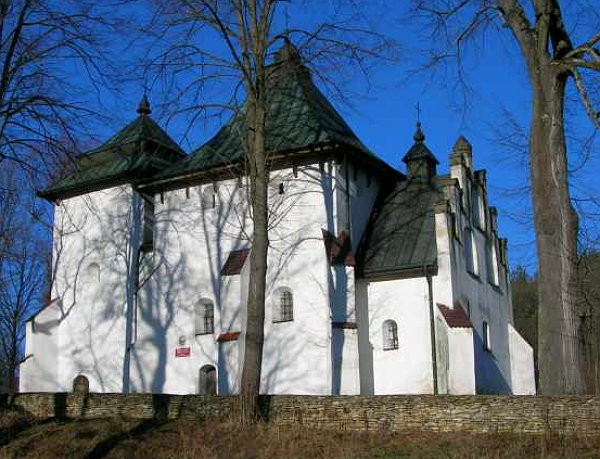Sian region
Sian region [Надсяння (Nadsiannia) or Посяння (Posiannia), also Засяння (Zasiannia)]. (Map: Sian region.) A name occasionally used to designate the area situated approximately along both sides of the Sian River north of the Lemko region and the city of Sianik along the border between Ukrainian and Polish ethnic territory. The Sian region includes sections of the Low Beskyd and the Middle Beskyd, the foothills of the Carpathian Mountains, and the Sian Lowland. Its major centers include the cities of Peremyshl, Jarosław, and Sianik as well as Brzozów (Bereziv), Radymno, Przeworsk (Perevorsk), and Leżajsk. It was part of the Kyivan Rus’ state and the Principality of Galicia-Volhynia before coming under Polish control, as part of the Rus’ voivodeship, in 1340–1772. In 1772–1918 the Sian region was part of the Austrian Empire, in 1918–19, part of the Western Ukrainian National Republic, and in 1923–39, part of the Polish state. In 1939, as a result of the Molotov-Ribbentrop Pact, the region was divided between Germany (in the Generalgouvernement) and the Soviet Union along the Sian River, and then in 1941 occupied totally by the Germans. It was subsequently taken over by the Union of Soviet Socialist Republics and then ceded once more to Poland in a treaty signed on 16 August 1945. Only a tiny corner of the region, around Peremyshl, was incorporated into the Ukrainian Soviet Socialist Republic.
Starting in the 15th century the Sian region was subjected to extensive Polonization with the colonization of lands by Polish settlers, the Polonization of incoming German settlers, and the common switch of religious and linguistic affiliation among the local population to the Roman Catholic rite and the Polish language. Over time the area's Ukrainian population became a definite minority, and the boundary between Polish and Ukrainian ethnic territory was rolled back approx 50 km to the east, from near the Vistula River to the Sian River. Only a few pockets of Ukrainians remain in those easternmost reaches, the furthest afield being in the village of Ternavka, in the Przeworsk region. Other villages in those eastern areas generally had an ethnically mixed population in which the Ukrainians (commonly known as zamishantsi) generally spoke Polish even though they understood the Ukrainian language and were adherents of the Greek Catholic church. It is estimated that in 1939 approximately 40,000 Ukrainians lived in the Sian region west of the Polish-Ukrainian border. That number included about 50 percent of the Ukrainian population that used Polish as its home language, but not the zamishantsi.
After the establishment of postwar boundaries in 1945–6, most of the Ukrainian population in the Sian region was resettled in the Ukrainian Soviet Socialist Republic. A smaller proportion was resettled in western or northern Poland (see Operation Wisła), and only a tiny rump of Ukrainians was left in and around Peremyshl. The only completely Ukrainian settlement remaining in the region was the village of Kalnykiv, east of Radymno.
Volodymyr Kubijovyč
[This article originally appeared in the Encyclopedia of Ukraine, vol. 4 (1993).]

%20(panorama).jpg)

%20River%20in%20Peremysh%20(Przemysl).jpg)
%20River%20near%20Peremyshl%20(Przemysl).jpg)

%20River%20near%20Jaroslaw.jpg)